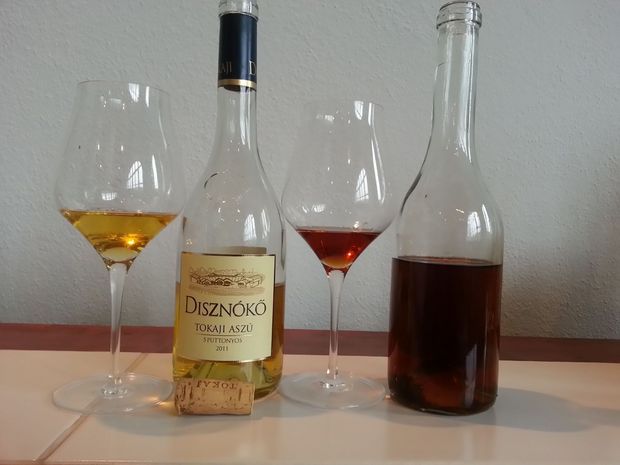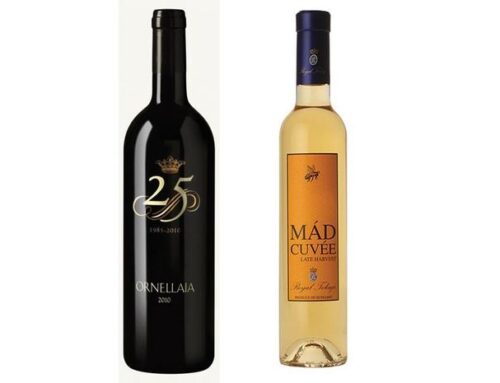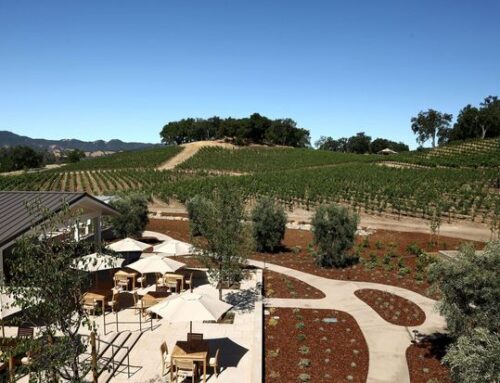Tokaj exudes history, while tokaji oozes pleasure.
Two hours by car southwest of Budapest, Hungary lies the ancient wine region and town, Tokaj. Starting in 1730, its vineyards were classified First to Third Growths, and a royal decree in 1757 created the Tokaj appellation.
Tokaji– meaning from Tokaj- wine was sweet, and during the 17th and 18th centuries, coveted by Europe’s royalty from London to Versailles to Saint Petersburg. From that high point, history was less kind.
At the end of the 19th century, phylloxera destroyed Tokaj’s vineyards; after replanting, two World Wars and the imposition of Communism eliminated Tokaji’s quality. Hungary’s independence in 1991 was Tokaj’s opportunity to revive its exquisite Tokaji.
In 1992, the French Insurance company AXA added Disznoko, a First Growth Tokaj estate, to its portfolio of wineries. It replanted 256 acres of Disznoko’s 370 acre estate, built a modern winery, and formed a team to rejuvenate its wines.
Disznoko planted four of the six approved grape varieties for Tokaji: Furmint, harslevelu, zeta and yellow muscat. It produces two dry white wines, but Disznoko’s reason for being is its four sweet wines: Tokaji Late Harvest, Edes Szamorodni, Aszu and Eszencia.
The sweet wines are made from furmint, or a combination of the four grapes that are infected with botrytis cinerea, known as noble rot. This fungus penetrates the grape’s skin, releasing water and concentrating the fruit’s sugar. As the grape shrivels, a metamorphosis changes the sugary substance into a honey-textured nectar.
Tokaji Aszu is the region’s legendary wine. Disznoko produces two versions of Aszu: 5 and 6 Puttonyos- a measurement of sweetness based on a basket of aszu (dry) grapes to a volume of base wine.
Two weeks ago at Disznoko, I tasted 14 vintages of Disznoko Tokaji Aszu from its inaugural 1993 to 2011, each with either 5 or 6 puttonyos.
Winemaker Laszlo Meszaros recounted how the former Communists, who controlled the Hungarian wine board, refused to recognized the delicious, fruit-forward 1993 Disznoko Aszu 5 Puttonyosbecause it was not a traditional oxidized, alcohol-flavored Aszu. But these apparatchiks defined tradition as starting with the Communist-made Aszu. A few years later, traditional Aszu was reestablished to the 17th century.
The 1993 Disznoko Aszu has aged to amber, its flavor evolved to a tangy orange; the vineyard’s minerality, and furmint’s acidity keep it balanced and young.
The 2011 Disznoko Tokaji Aszu 5 Puttonyos was the other bookend. Its wedding band gold is Aszu’s nascent hue, while its embryonic aromas and flavors say color me white: White pepper, button mushroom and white nectarine scents lead to white peach and nectarine tastes. But sugary it’s not; the lemon-like acidity provides a cleansing finish.
In our market, the 2007 Disznoko Tokaji Aszu 5 Puttonyos and the 2002 Aszu 6 Puttonyos are available. The golden 2007 Aszu layers coffee, apricot and citrus aromas, and the fruit flavors glide on Aszu’s honey texture underlined with acidity. It’s more delicate than the amber-tinted 2002 Aszu 6 Puttonyos; the latter’s mango and pineapple aromas and flavors finished with Disznoko’s trademark tangy orange acidity.
Our tasting linked Disznoko’s Tokaji Aszu to Tokaj’s glorious past.
Disznoko Tokaji Aszu wines are in 500ml bottles. The 2007 Aszu 5 Puttonyos retails for about $40; the 2002 Aszu 6 Puttonyos is about $80.
Follow John Foy on Twitter @JLFOY2









Leave A Comment